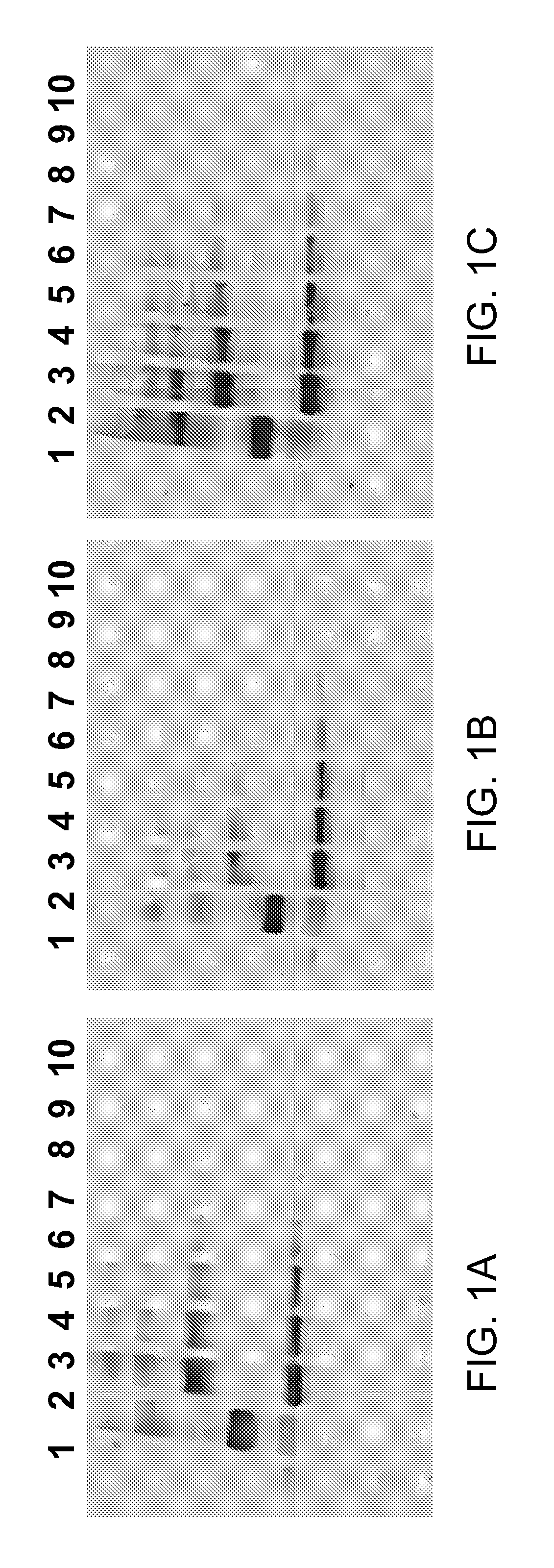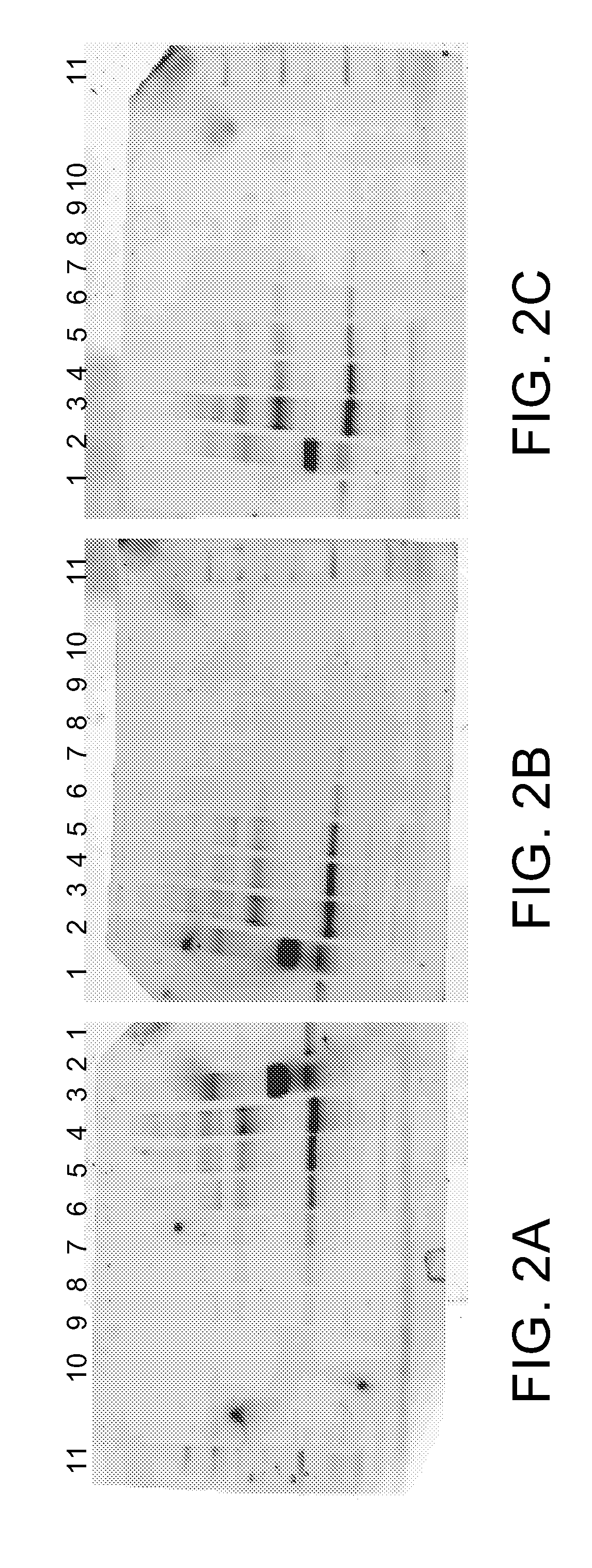Hydrophilic labels for biomolecules
a biomolecule and label technology, applied in the field of hydrophilic labels for biomolecules, can solve the problems of unsatisfactory signal-to-noise ratio, prone to aggregate and dimer formation,
- Summary
- Abstract
- Description
- Claims
- Application Information
AI Technical Summary
Benefits of technology
Problems solved by technology
Method used
Image
Examples
example 1
Synthesis of Compounds of the General Formula I
1. Synthesis of 1-ethyl-3-methyl-2-((E)-2-phenylamino-vinyl)-5-sulfo-3-(3-sulfo-propyl)-3H-indolium sodium salt
[0056]0.794 g (2 mmol) 3-(3-sulfopropyl)-2,3-dimethyl-5-sulfonato-1-ethyl-3H-indolium sodium salt and 0.49 g (2.5 mmol) N,N′-diphenyl-formamidine were dissolved in 20 ml methanol and stirred for about four hours under reflux. The solvent mixture was removed in vacuum after cooling to room temperature. The residue was washed carefully with ethyl acetate. A dark yellow solid was obtained which was processed without further purification.
2. Synthesis of 2-{(E)-3-[3-(3-carboxy-propyl)-3-methyl-5-sulfo-1-(3-sulfo-propyl)-1,3-dihydro-indol-(2E)-ylidene]-propenyl}-1-ethyl-3-methyl-5-sulfo-3-(3-sulfo-propyl)-3H-indolium trisodium salt (OB-3)
[0057]500 mg (1 mmol) 1-ethyl-3-methyl-2-((E)-2-phenylamino-vinyl)-5-sulfo-3-(3-sulfo-propyl)-3H-indolium trisodium salt and 483 mg (1 mmol) 3-(3-carboxypropyl)-2,3-dimethyl-5-sulfonato-1-(3-sulfopro...
example 2
Compounds of the General Formula II
8.2-((E)-2-{3-[2-[3-(3-carboxy-propyl)-3-methyl-5-sulfo-1-(3-sulfo-propyl)-1,3-dihydro-indol-(2E)-ylidene]-eth-(E)-ylidene]-2-chloro-cyclohexyl}-vinyl)-1-ethyl-3-methyl-5-sulfo-3-(3-sulfo-propyl)-3H-indolium trisodium salt (OB-8)
[0072]397 mg (1 mmol) 3-(3-sulfopropyl)-2,3-dimethyl-5-sulfonato-1-ethyl-3H-indolium sodium salt and 358 mg (1 mmol) [1-{2-chloro-3-[1-phenylamino-meth-(E)-ylidene]-cyclohex-1-enyl}-meth-(E)-ylidene]-phenyl-ammoniumchloride were dissolved in 10 ml acetic acid and 10 ml acetic anhydride and stirred at 120° C. for one hour. 483 mg (1 mmol) 3-(3-carboxypropyl)-2,3-dimethyl-5-sulfonato-1-(3-sulfopropyl)-3H-indolium and 5 ml pyridine were then added. The mixture was stirred at 170° C. for about twenty min. The obtained precipitate (mixture of the diasteroisomers OB-8a and OB-8b) was extracted by suction, washed with ether, and dried.
[0073]The residue was purified by column chromatography: RP-18: acetonitrile / water, 2 / 8+1% conc. ...
example 3
General Synthesis of N-Hydroxysuccinimidyl Esters (X1═—NHS)
[0075]20 μmol dye of the pure diasteromeric compound of type Ia, Ib, IIa, or IIb with X1═OH, 8 mg (40 μmol) dicyclohexylcarbodiimide, and 5 mg (40 μmol) N-hydroxysuccinimide were dissolved in 2 ml of DMF and 100 μl water. Six μl (40 μmol) triethylamine was then added. The reaction mixture was stirred at room temperature (about 20° C. to about 22° C.) for 24 hours and then filtered. The solvent was removed and the residue was washed with diethylether. The reaction proceeded quantitatively.
PUM
| Property | Measurement | Unit |
|---|---|---|
| pH | aaaaa | aaaaa |
| pH | aaaaa | aaaaa |
| temperature | aaaaa | aaaaa |
Abstract
Description
Claims
Application Information
 Login to View More
Login to View More - R&D
- Intellectual Property
- Life Sciences
- Materials
- Tech Scout
- Unparalleled Data Quality
- Higher Quality Content
- 60% Fewer Hallucinations
Browse by: Latest US Patents, China's latest patents, Technical Efficacy Thesaurus, Application Domain, Technology Topic, Popular Technical Reports.
© 2025 PatSnap. All rights reserved.Legal|Privacy policy|Modern Slavery Act Transparency Statement|Sitemap|About US| Contact US: help@patsnap.com



